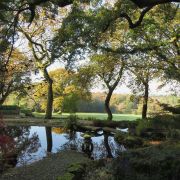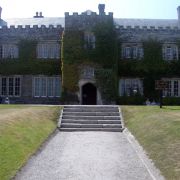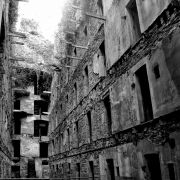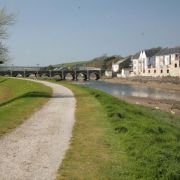
Four miles north-west of Bodmin lies the fifty acre estate of Pencarrow, originally mentioned in the Domesday Book. The house is close to the curiously named village of Washaway. Pencarrow Gardens were laid out, mainly during the first half of the 19th century, by Sir William Molesworth, a radical statesman. He planted a specimen of almost every known conifer considered sufficiently hardy to stand a chance of surviving the British climate. Many of the trees and flowering shrubs here are too tender to survive in any part of Britain.
One of the conifers planted was the derivation of the description monkey puzzle tree a name given to a particular conifer by one of the guests to the estate.
The gardens contain more than seven hundred different varieties of rhododendrons, in addition to camellias, azaleas and blue hydrangeas. In the spring, masses of bluebells and wild garlic cover the grassy areas beneath the trees. The sunken Italian Garden is a beautifully proportioned feature just south of the house. The main fountain is modelled on one in Piazza Navona in Rome.
The adjacent rockery was built with blocks of granite from Bodmin Moor. The story goes that the huge blocks were carried voluntarily from the moor by local labourers to show their support for Molesworth when he failed to be elected to parliament.
The Carriage Drive is a mile long and lined with conifers and shrubs. Many of the latter were planted from seed in 1842. There are few of the original trees remaining today but one that has survived is the oldest known swamp cypress in the country. The drive passes through an ancient British encampment, the Rounds. As many other local estates, this one boasts its own Cornish cross. These crosses often stood at junctions but were frequently appropriated by landowners and became features in their estates.
Pencarrow also has a wishing well, a lake, a grotto and a cave all of which have been made into attractive features in these lovely gardens. On the more practical side, it has a walled kitchen garden and an ice-house. The estate is still owned by the Molesworth-St.Aubyn family, who open the house and gardens to the public from April each year.





